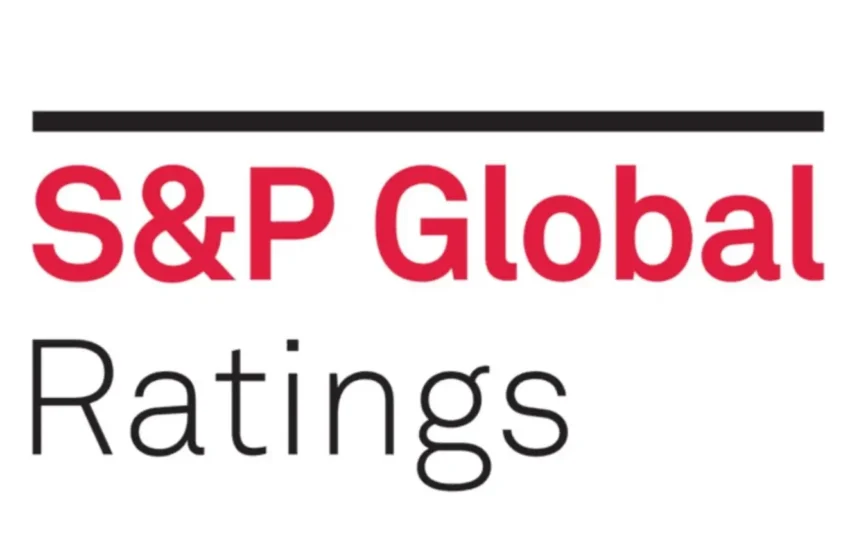S&P Global Report Unveils Potential for US Stablecoin Market Transformation
(Originally posted on : Crypto News – iGaming.org )
The Lummis-Gillibrand Payment Stablecoin Act, which will be introduced on April 17, 2024, is anticipated to significantly alter the stablecoin industry in the United States, per a recent evaluation by S&P Global Ratings.
The research, which was published by Andrew O’Neill and Mohamed Damak, suggests that the new regulation may lead to clearer constraints and more institutional backing for stablecoins. The proposal allows approved non-bank financial institutions to issue stablecoins under strict regulatory monitoring with the aim of enhancing user confidence and market stability.
By enforcing tight rules on asset reserves and operating transparency, the bipartisan proposal establishes the foundation for stablecoins to become widely recognized digital currencies for institutional and everyday usage.
Market Dynamics Shift With New Legislation
The S&P Global Ratings analysis delves into the potential market dynamics following the enactment of the Lummis-Gillibrand Payment Stablecoin Act. With restrictions on non-banking entities’ stablecoin issuance capped at $10 billion, the legislation aims to level the playing field for traditional banks, potentially reducing the dominance of foreign-issued stablecoins like tether (USDT).
Damak and O’Neill highlight the impact on tether, stating, “Tether, the largest stablecoin by outstanding volume, is issued by a non-U.S. entity and therefore not a permitted payment stablecoin under the proposed bill. This means that U.S. entities couldn’t hold or transact in tether, which may reduce demand while boosting U.S.-issued stablecoins. We note, however, that tether transaction activity is predominantly outside the U.S., in emerging markets, and driven by retail users and remittances.”
New players only. Exclusive 111% Welcome Bonus + 111 Free Spins
While the bill faces criticism for its potential to stifle innovation and infringe on free speech, it opens doors for new opportunities in banking and financial services, particularly in digital asset custody. The S&P report suggests that the proposed legislation could prompt changes in SEC regulations, fostering a more competitive landscape and encouraging innovation in blockchain-based financial services.
Despite the concerns raised by Coin Center regarding potential stifling of innovation, the Lummis-Gillibrand Payment Stablecoin Act signals a significant step towards regulatory clarity and stability in the U.S. stablecoin market.







 Bitcoin
Bitcoin  Ethereum
Ethereum  Tether
Tether  XRP
XRP  USDC
USDC  Wrapped SOL
Wrapped SOL  Lido Staked Ether
Lido Staked Ether  TRON
TRON  Dogecoin
Dogecoin  Cardano
Cardano  Figure Heloc
Figure Heloc  WhiteBIT Coin
WhiteBIT Coin  Wrapped stETH
Wrapped stETH  Bitcoin Cash
Bitcoin Cash  Wrapped Bitcoin
Wrapped Bitcoin  USDS
USDS  Chainlink
Chainlink  Wrapped eETH
Wrapped eETH  Binance Bridged USDT (BNB Smart Chain)
Binance Bridged USDT (BNB Smart Chain)  LEO Token
LEO Token  WETH
WETH  Hyperliquid
Hyperliquid  Monero
Monero  Stellar
Stellar  Zcash
Zcash  Ethena USDe
Ethena USDe  Coinbase Wrapped BTC
Coinbase Wrapped BTC  Litecoin
Litecoin  Sui
Sui  Avalanche
Avalanche  Hedera
Hedera  Shiba Inu
Shiba Inu  sUSDS
sUSDS  USDT0
USDT0  Dai
Dai  Mantle
Mantle  PayPal USD
PayPal USD  Toncoin
Toncoin  World Liberty Financial
World Liberty Financial  Cronos
Cronos  Ethena Staked USDe
Ethena Staked USDe  Uniswap
Uniswap  Polkadot
Polkadot  MemeCore
MemeCore  Aave
Aave  USD1
USD1  Bittensor
Bittensor  Rain
Rain  Canton
Canton  Bitget Token
Bitget Token  OKB
OKB  Tether Gold
Tether Gold  Falcon USD
Falcon USD  Aster
Aster  NEAR Protocol
NEAR Protocol  Ethereum Classic
Ethereum Classic  Binance-Peg WETH
Binance-Peg WETH  BlackRock USD Institutional Digital Liquidity Fund
BlackRock USD Institutional Digital Liquidity Fund  Jito Staked SOL
Jito Staked SOL  Ethena
Ethena  Pepe
Pepe  Pi Network
Pi Network  Internet Computer
Internet Computer  Jupiter Perpetuals Liquidity Provider Token
Jupiter Perpetuals Liquidity Provider Token  syrupUSDC
syrupUSDC  Pump.fun
Pump.fun  HTX DAO
HTX DAO  PAX Gold
PAX Gold  Global Dollar
Global Dollar  Ondo
Ondo  Worldcoin
Worldcoin  KuCoin
KuCoin  Circle USYC
Circle USYC  Sky
Sky  syrupUSDT
syrupUSDT  BFUSD
BFUSD  Ripple USD
Ripple USD  Binance Bridged USDC (BNB Smart Chain)
Binance Bridged USDC (BNB Smart Chain)  Rocket Pool ETH
Rocket Pool ETH  POL (ex-MATIC)
POL (ex-MATIC)  Aptos
Aptos  Gate
Gate  Wrapped BNB
Wrapped BNB  Arbitrum
Arbitrum  Binance Staked SOL
Binance Staked SOL  Quant
Quant  Midnight
Midnight  Official Trump
Official Trump  Algorand
Algorand  Function FBTC
Function FBTC  Cosmos Hub
Cosmos Hub  Liquid Staked ETH
Liquid Staked ETH  Lombard Staked BTC
Lombard Staked BTC  Solv Protocol BTC
Solv Protocol BTC  VeChain
VeChain